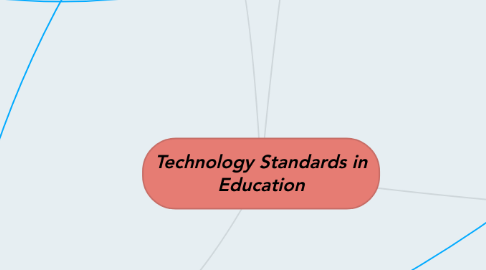Technology Standards in Education
by Mark Grundy

1. Learning and Technology Policy Framework
1.1. 5 Policy Directions
2. ICT Program of Studies
2.1. Outcome Categories
3. Communicating, inquiring, decision making and problem solving
3.1. Students can put technological skills into practice in real life situations.
4. Processes for productivity
4.1. Students have the knowledge and skills required to use technology effectively.
5. Foundational operations, knowledge and concepts
5.1. Students understand how to use technology and its effect on society as a whole.
6. Student-centered learning
6.1. Using technology as a means to provide a personalized learning experience for each student.
7. Research and innovation
7.1. Teachers and administrators stay up to date on the latest research in education and apply it to their classrooms.
8. Professional learning
8.1. Teachers are technologically literate and apply this literacy to support student learning.
9. Leadership
9.1. Leaders put in place policies that are conducive to the use of technology in the classroom.
10. Access, infrastructure, and digital learning environemnts
10.1. All learning environments have reliable digital technologies available in them.
11. As technology constantly changes, the research and best practices surrounding them change as well. These policies state that teachers must keep up.
12. Students cannot learn the skills needed for effective technology use if teachers are not technologically literate themselves.
13. Students understand that technology enables their actions to have far-reaching effects, and they must thus act responsibly.
14. A student-centered learning experience will be more likely to facilitate a passion for knowledge acquisition.
15. Student-centered lessons must be relevant to the digital world that the students live in.
16. Teachers must continually keep up with ever changing technology in order to remain technologically literate.
17. 2016 ISTE Standards for Students
18. 2008 ISTE Standards for Teachers
19. Facilitate and inspire student learning and creativity.
19.1. Teachers ignite a passion for learning in students.
20. Design and develop digital age learning experiences and assessments.
20.1. Lessons are relevant to the context of the digital world students will be entering.
21. Model digital age work and learning
21.1. Teachers demonstrate what it means to work in a digital context.
22. Promote and model digital citizenship and responsibility.
22.1. Teachers demonstrate ethical behavior with technology.
23. Engage in professional growth and leadership
23.1. Teachers continually learn and grow as professionals in the use of technology in the classroom.
24. Digital citizen
24.1. Students understand their impact on the digital world and act ethically within it.
25. Knowledge constructor
25.1. Students are able to find and evaluate the accuracy of information discovered via a digital means.
26. Computational thinker
26.1. Students think of strategies that utilize technology in order to help them problem solve, analyze data, etc.
27. Creative communicator
27.1. Students use digital tools to help them express themselves and communicate.
28. Global collaborator
28.1. Students use technology to give and gain knowledge with other students around the world.
29. Teachers must provide an example of digital morality for students to emulate.
30. Students who are able to see the example teachers set for them will be more likely to follow and be effective workers and learners in the digital world.
31. Both of these policies call for effective communications skills with technology for students.
32. The problem solving and decision making skills called for in the ICT require computational thinking from students.


